Explore all New Cars of 2024
 Upcoming 2024 Maruti Suzuki Dzire To Get These 5 Features Over The Current ModelUpcoming 2024 Maruti Suzuki Dzire To Get These 5 Features Over The Current Model
Upcoming 2024 Maruti Suzuki Dzire To Get These 5 Features Over The Current ModelUpcoming 2024 Maruti Suzuki Dzire To Get These 5 Features Over The Current Model

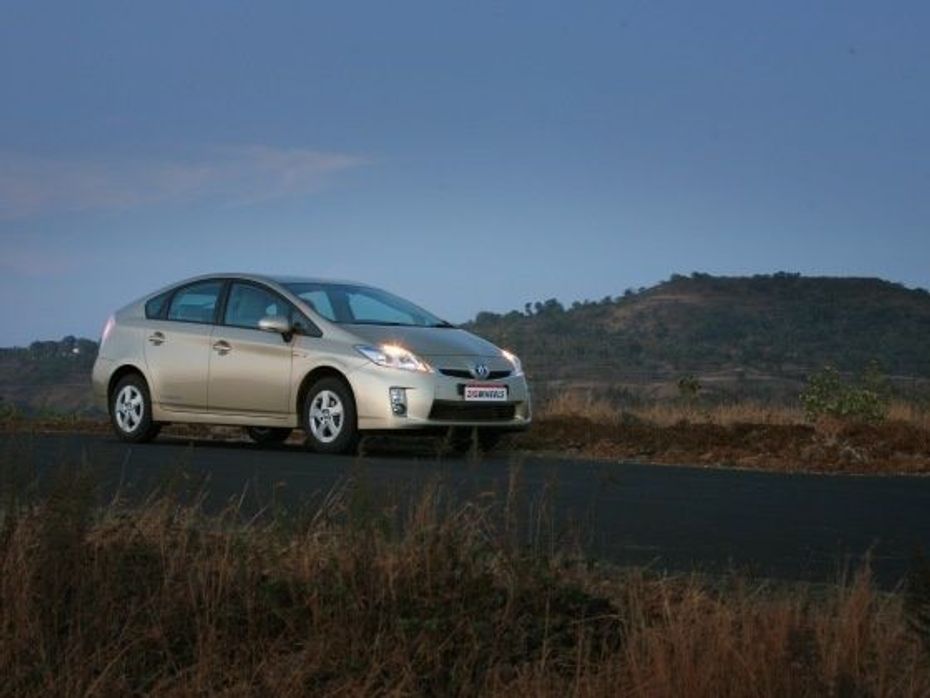
I love our planet and like most of us, hate the climbing heat from our carbon emitting lifestyles. Unfortunately, I love being at the wheel much more, and an afternoon at the garage is preferred over an evening in the park. New propaganda flaming petrol-heads has seen the light in the last few years however, and while IC engines have grown progressively cleaner there is just one real way of showing that you are true-blue-green – the sort that uses only paper bags and has a compost heap in his backyard. It is called a hybrid vehicle, and the best seller of the lot has just made its debut in India.
Some may say that Toyota has lost its sporty edge of late, but whatever it has lost in terms of making erstwhile scorchers like the Supra and the Celica, it has made up for by making increasingly user-friendly, refined and reliable cars. If it had not, it wouldn’t be the world’s biggest car maker with such fierce consistency. Logical then, that when the world had just begun to see eco-friendly back in 1997, Toyota had already cooked up the solution, sold it and taken home the profits. It was called the Prius, and was the world’s first mass-produced hybrid car, since it made use of both petrol and electricity to push itself around. And now it is coming to India with the third avatar of its green crusader – the Prius.
Design Dissection
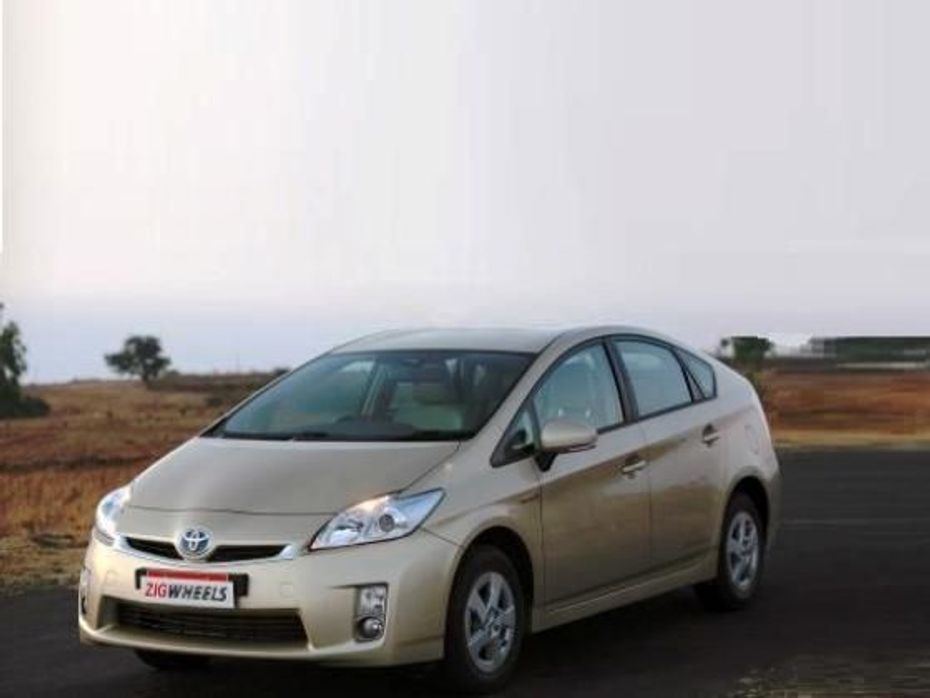
Like most Toyota products, the design approach is on the conservative side, which is welcome for a change on a ‘car of the future’ like the Prius where it is just too easy to go ultra-radical and create a design inspired from a spaceship. The approach has worked well for Toyota consistently in the past - the non-threatening and civil countenance only widening the appeal of its products. The Prius is no different.
Despite its no-nonsense design, the Prius comes across as a remarkably elegant and more importantly, one of the most identifiable designs on the street. The tall bumper and the absence of a large grille thanks to lower cooling requirements make for a very tidy front. The short and sweetly creased hood stays far from being ungainly, and flows smoothly into the swooping silhouette of the roofline. At the rear, the sweet beak spoiler sets the car apart from almost any other hatchback in the market, and the large tail lamp cluster spreads very well to complete the view.
Apart from being aesthetically non-controversial, the design of the Prius has a lot of technology riding behind itself. The exterior is a fantastic study in the art of aerodynamics – reduced drag principles applied here not for performance but for green gains. Directing airflow away from frontal surfaces is a big pro, and smart touches like the hidden diffuser at the rear guide the wind around the car in a most unobtrusive manner. Thanks to all the smartly contoured nooks and crannies, the car returns with a class busting drag co-efficient as low as 0.25. To do that without making the car look like a scalpel is certainly no mean feat, and the fact that it still remains easy and pleasant on the eye means high marks for the design.
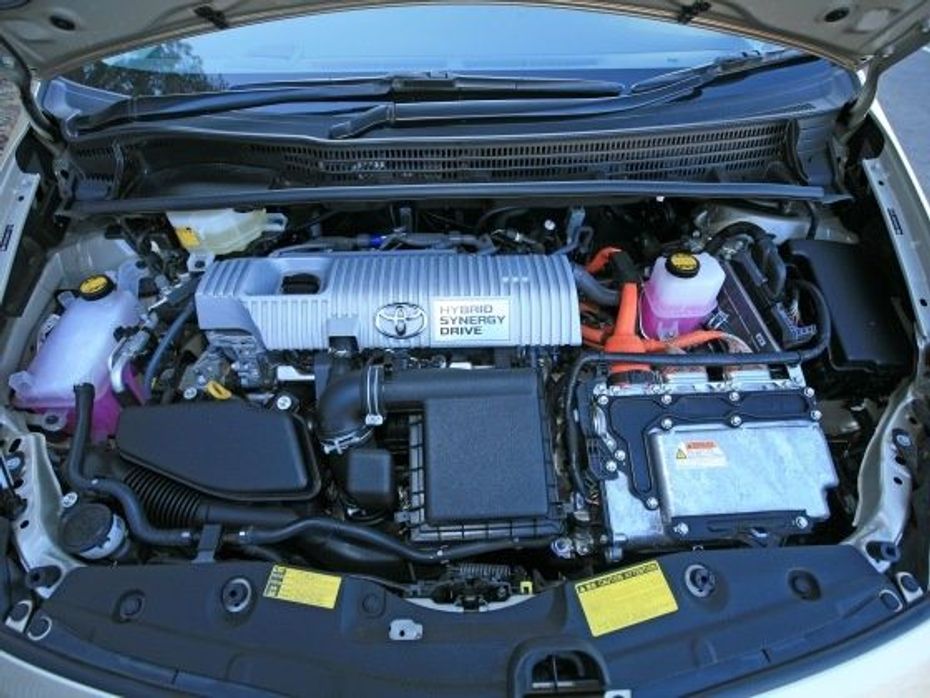
Before we get into the thick of things, a case must be made for the hybrid hype that happens to be the Prius’ single largest USP. The new 3rd gen Prius comes with a revamped version of Toyota’s much touted “Hybrid Synergy Drive”. The system basically involves a conventional 1.5-litre 4-cylinder petrol engine, one electric motor to move the wheels and another motor that takes care only of charging the car’s batteries. Electric motors offer significantly higher moving force for the same amount of energy spent, so when the car needs to dish out high torque – in slow moving traffic for example – the motor drives the wheels. At easier cruising speeds when the car has its momentum to support its motion, the petrol engine comes into play so that battery charge is not wasted. The switching and splitting of power between the petrol engine and the electric motor takes place electronically and reaches the wheels through a continuously variable automatic gearbox, which makes sure that the power delivery is smooth and consistent.

The difference in the driving experience of the Prius begins right from stepping into the car. An RFD controlled keyless-entry ensures that there are no keyholes to fill, and the push button start activates all systems with a welcome green glow from the futuristic centre console on the dashboard. The car is running, they say, but one would feel nothing since take off from standstill is handled exclusively by the battery-powered electric motors. The noiseless motion of the car in fact needs some getting used to for drivers brought up on a staple diet of engine vibes, but take off is smooth and hassle free.
Stomp the throttle though, and the petrol engine comes alive and even though the revs don’t climb drastically thanks to the CVT transmission, the car propels forward with enough punch for quick overtakes. The Prius in fact recorded fantastic results in our acceleration runs – 100 km/h from standstill came in a little more than 10 seconds – a figure at par with most 2.5-litre sedans. Ride quality is supple and comfortable but road noise percolates with little hindrance into the cabin, which could be irritating especially on concrete surfaces.
The Prius does offer very generous space on the inside and top-notch fit and finish with the interiors. The graphic information display on the centre console is a great way of knowing exactly how green your drive is and how well the hybrid system works – a sweet way of staying entertained and looking smarter than you are before your kids by teaching them a thing or two about the science behind the motion. I loved the bright blue drive selector which adds an important dash of visual zing to the innards of the Prius.
Apart from the acceleration however, the drive experience remains somewhat disconnected overall, with precious little feedback from the suspension, the steering or even the brakes. That being said, the Prius always has the ability to pop the ‘not-a-driver’s-car’ statement in its defense and remains a fantastic and practical family car, but we think that is somewhat unfair to the fence sitters who won’t mind a green car as long it is involving.
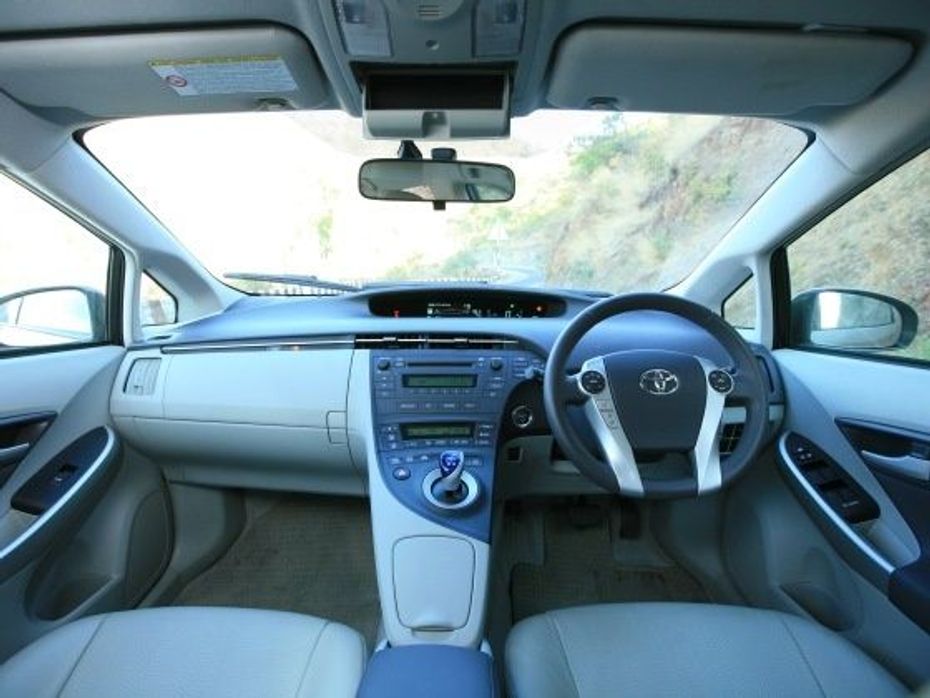
Alright then, I haven’t burnt as much fuel as I normally do with a day’s drive, it has been a decent driving experience (if not psychotically jolly), and since the air is a teeny tiny bit cleaner than it would’ve been otherwise, so should be my conscience. The truck ahead however is billowing thick black smoke like a house on fire – to misuse the idiom – and a massive smirk climbs on to my face. No cynicism here, complete respect for the people who choose to do their bit for the environment, but seriously, we are still a few years away from being a green driving nation – step out on any street and you shall see proof.
We must also consider the fact that while the Prius remains a phenomenally fuel efficient car for its size, space and performance. It returned an overall fuel efficiency of 13.2 kmpl in our tests – encouraging but modern conventional fuel-powered engines are almost at par with its levels of emissions and economy. For the sizeable price of Rs 26 lakh ex-showroom, you may get a car that has technology like no other, but the real-world gains are small. But we haven’t yet spoken about the image makeover this car can offer.
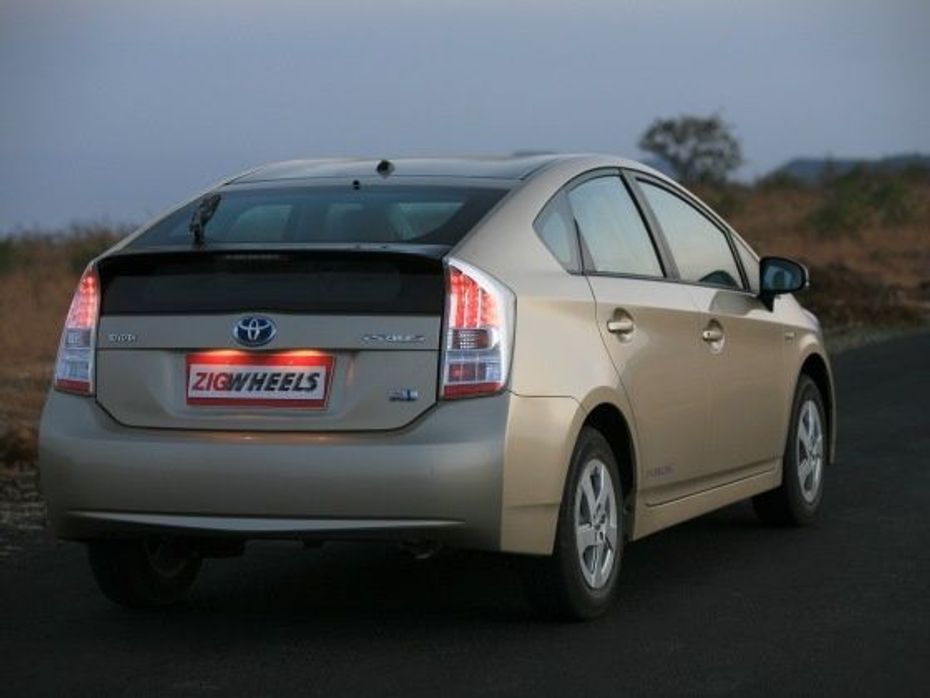
In terms of capabilities the Prius already has the Honda Civic Hybrid to contend with, but on the price entry-level German luxury sedans like the Mercedes-Benz C-Class and the BMW 3-series remain more natural rivals - Teutons that have found enough favour in the metros to almost be labeled as ‘common’. For the corporate head honchos or budding tycoons who wish project a difference in approach and also grab brownie points at the golf course, the eco-friendly Toyota starts making perfect sense. That is a niche that few would willfully deny, and that’s precisely the space where the Prius must begin its green campaign.
India's largest automotive community